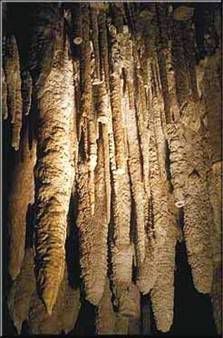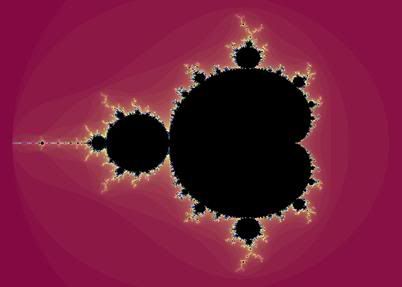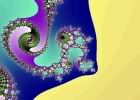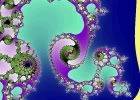"If you can read this, I can prove God exists"
"If You Can Read This, I Can Prove God Exists"
Language, Information, and Naturalism vs. Intelligent Design
Perry Marshall's talk at Willow Creek's Truthquest, South Barrington, Illinois, June 3, 2005
This is a rather bold statement is it not? If you can read this I can prove God exists. Tonight I'm going prove it.
I am going to talk briefly about the technical end of this but for the most part this is going to be something that anybody can understand. And in the process of this discussion I'm going to prove that God exists and that life was designed by a mind. I'm going to prove that.
This is very important material I think it's very relevant to our culture today. Paul Cook brought in a stack of articles from the last few weeks of newspapers – people debating Intelligent Design, it's a huge issue in our culture today. It's a political battleground, it's an ideological, it's a religious and philosophical background and it's a scientific battleground.
For the most part what you hear out there in the world is a bunch of name calling and really not getting down to the bottom of anything. But we're going to get down to the bottom of some very basic things. So strap on your crash helmets, we're going to move fast. I'm really looking forward to this.
What Do Languages and Modern Information Systems Say About Evolution?
What we're going to talk about today is: What do languages and information systems say about evolution? I got pulled into this about a year ago because of a discussion I was having with a friend. You know this whole Intelligent Design versus Naturalism debate? Or if you want, you can call it the creation versus evolution debate. I had never really delved into it to really get to the bottom of things until about a year ago.
I started investigating this and I had this eureka moment one day. I think it was April of last year and I discovered some things about information theory linked to DNA. I'm not going to be terribly theoretical here, but there's a whole field of science called communication engineering, which is what I studied in school. I have an Electrical Engineering degree and I specialized in control systems and communication systems.
 A couple of years ago I wrote an Ethernet book. Ethernet is that blue cable over here that is plugged into my computer, and hooks it up to the Internet. My book was published in 2002, it's in its second edition and is called Industrial Ethernet.
A couple of years ago I wrote an Ethernet book. Ethernet is that blue cable over here that is plugged into my computer, and hooks it up to the Internet. My book was published in 2002, it's in its second edition and is called Industrial Ethernet.
My eureka moment was when I realized that everything I had been writing about and studying in communication systems applied exactly to DNA and to life.
Do you realize that every one of you has billions of copies of yourself represented in the form of DNA? In every cell of your body there is a copy of you. It's an exact plan for your body and it is an exquisitely designed coding system.
So what? The so what is, all of the things that we know now about modern communication, all the things that make packets zing back and forth across the Internet, also enable us to understand DNA and what it is.
What do these things say about evolution? What is information? Where does it come from? Have you ever thought about that? What is information? Can you define information? We are going to define it.
Do patterns occur naturally? Does information occur naturally?
At the end I'm going to talk about new directions for the evolution debate, because we are going to get to the bottom of important issues. When we get to the bottom of these issues, we are going to be able to be looking the direction of where science needs to go to answer some unanswered questions.
The Key Issue: Patterns vs. Designs

This is a photograph that I took in Luray Caverns in Virginia last summer when I was on vacation. Has anybody ever been to cavern? Are they really amazing or what? They are just spectacular.
Some kids were digging around about a hundred years ago and there was this hole that all this mud seemed to be sinking into, and they got to exploring and they find this huge cavern under the ground.
The cavern has stalagmites (those are the ones that hang from the ceiling) and stalactites, which build up from the floor. And beautiful patterns formed totally naturally; nobody had to design this cavern. The cavern naturally happened.
Here's another naturally occurring pattern, a tornado funnel cloud. Does anybody have to design a tornado? No. When you have the right weather conditions when you have the right temperature and pressure and moisture, and the right layers of temperature in the air. It forms and happens all by itself and it does amazing damage if it hits your house.
Snowflakes: every one is different, right? At home I've got a snowflake book and you can look in amazing detail under a microscope and you look at these exquisite patterns.

Did anybody have to design snowflake? No, not at all. Water + cold air + gravity + wind + time gives you snowflakes. In a cavern, water + minerals + gravity + time = stalactites and stalagmites.

Hot air + cold air + moisture + time = tornados and hurricanes, right? We all experience these things everyday.
Snowflakes, tornados, stalactites, stalagmites the behavior of those things are governed we now know as something that is called Chaos theory. Chaos theory is the study of how order forms naturally without design.
Chaos: An Eye-Opening Discovery
About fifteen years ago I was reading a book about it; my wife brought home this book from the library and it was about fractals and chaos. And when I read this book it opened my eyes to this whole set of patterns in the world that I had never recognized before.
Ever since then I have never not been able to see them. Every time I look out the window and I see a tree or every time I see a rainstorm or every time I see a stalactite or stalagmite or snowflake, what I think about is fractals and chaos.
Chaos is probably not the best word they could've picked, because chaos theory shows how natural processes produce order. Now fractals are a computer version of the same thing. A fractal is what happens when you take a pretty simple math equation and you plug a number into it and you get the number out, and you assign a color to it. Then you take it and you plug it back into the input and you run it through the formula again and again and again and again.... It starts drawing all of these pictures and so what you see right there is called the Mandlebrot set.
Fractals: The Mandelbrot Set – a computerized version of Chaos

See this fractal? If you zoom in, I'm going to zoom in just below the center where these two circles come together and that's exactly what it looks like if you zoom in and there' more little spirals coming out of it.
If you zoom in 4X more, the spirals look like that and if you zoom in again it looks like that and if you zoom in again it looks like that. And if you zoom in again it looks like that and you can keep zooming and zooming and zooming in and you see the same patterns repeating with variations over and over and over again. You can't predict exactly how it is going to turn out before you run the programs. You just know that you are going to see very similar patterns over and over and over again.




Next Page

1 Comments:
the fact that there is evidence of some very detailed and structured design in nature does not prove the existence of God
Post a Comment
<< Home